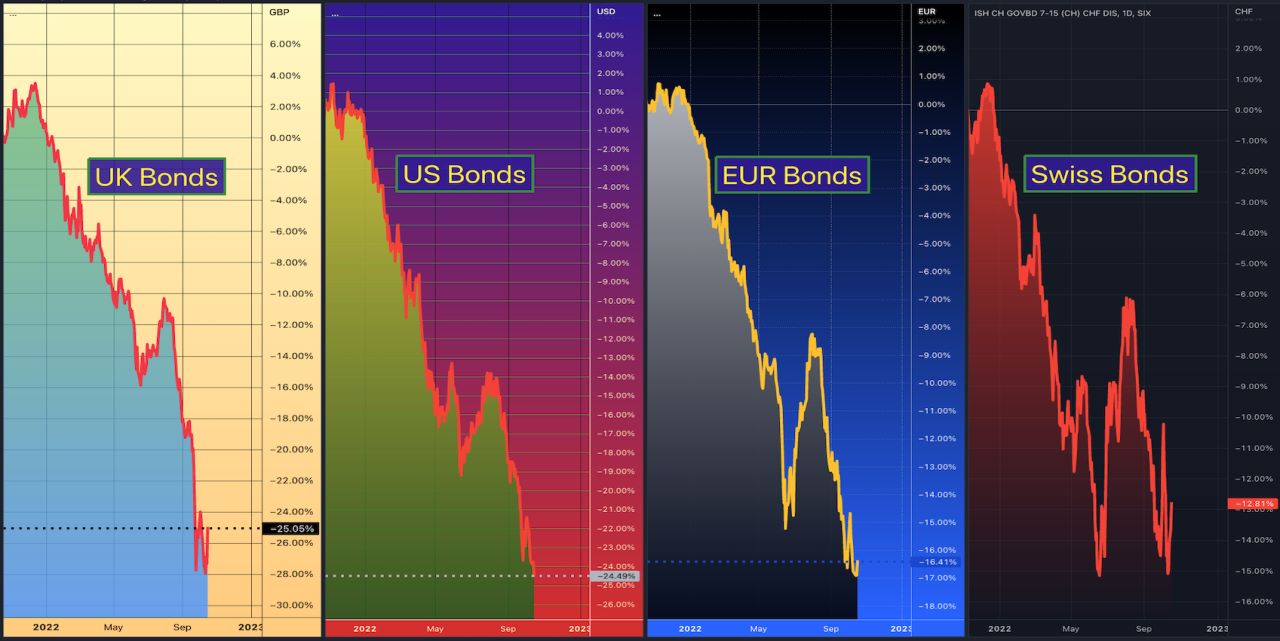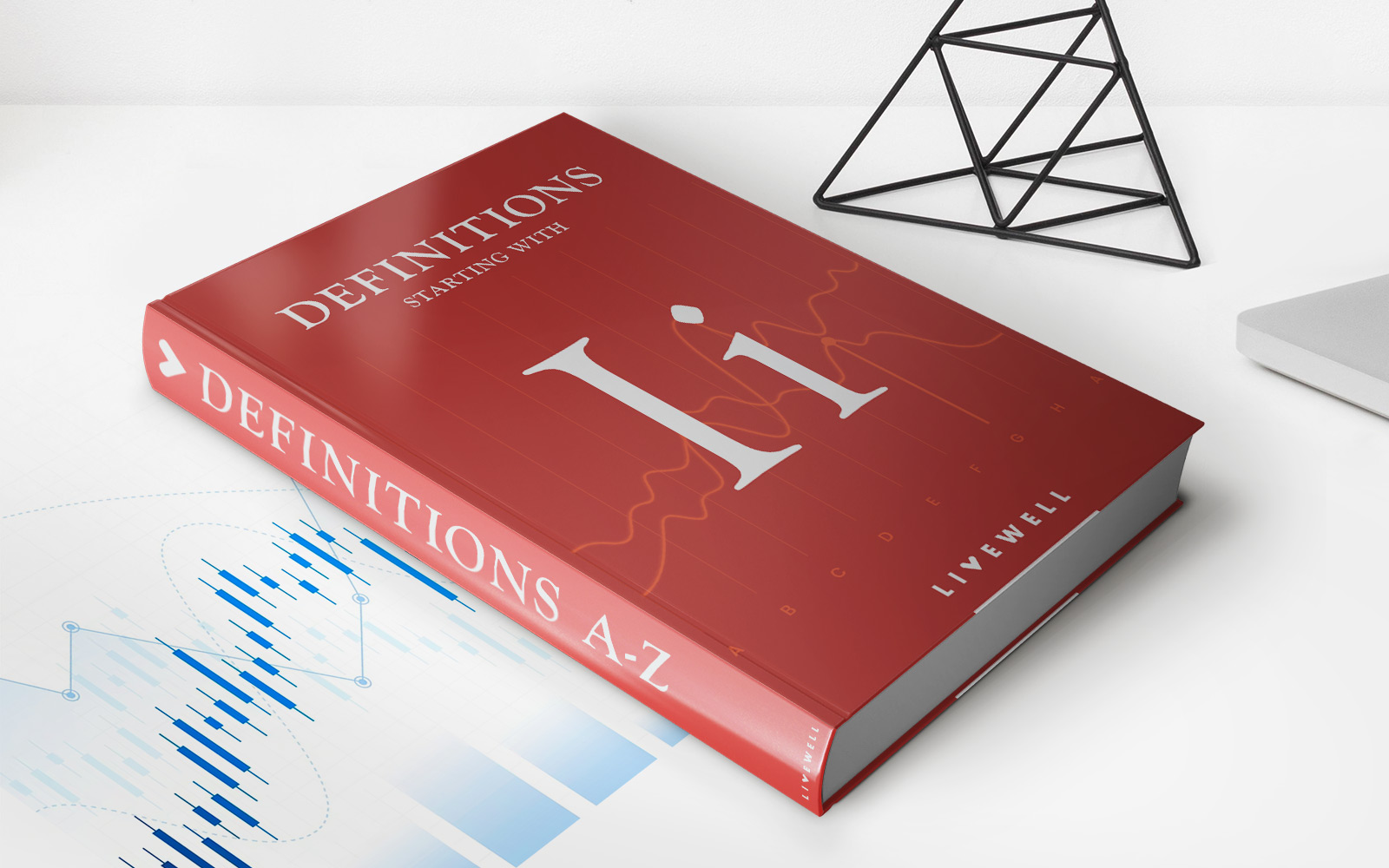

Finance
When Did Pension Funds Become Transferable?
Published: January 22, 2024
Learn about the transferability of pension funds in the finance sector and understand when this practice came into effect. Gain insights into the evolution of pension fund regulations.
(Many of the links in this article redirect to a specific reviewed product. Your purchase of these products through affiliate links helps to generate commission for LiveWell, at no extra cost. Learn more)
Table of Contents
Introduction
Pension funds play a pivotal role in securing financial stability during retirement, providing individuals with a reliable source of income after they exit the workforce. Over time, the management and regulations surrounding pension funds have undergone significant transformations, reflecting the changing needs and expectations of both employers and employees. One of the most notable developments in the realm of pension funds is the concept of transferability, which has emerged as a key feature in modern pension fund management.
The evolution of pension funds has been marked by a shift from defined benefit plans, which guarantee a specific payout upon retirement, to defined contribution plans, where the final payout depends on the contributions and investment performance. This transition has led to a greater emphasis on individual control and portability of pension funds, aligning with the dynamic nature of today's workforce.
The transferability of pension funds has become a crucial consideration for individuals seeking to optimize their retirement planning. It offers the flexibility to adapt to changing career paths, employment opportunities, and personal circumstances, empowering individuals to make informed decisions about their financial future. Understanding the historical context and regulatory framework surrounding the transferability of pension funds is essential for grasping its significance in contemporary financial management.
In this article, we will delve into the evolution of pension funds, explore the concept of transferability, examine the legal and regulatory changes that have shaped its implementation, and assess the impact of transferability on pension fund management. By unraveling these aspects, we aim to provide a comprehensive understanding of how pension funds have become transferable and the implications of this evolution for both employers and employees.
The Evolution of Pension Funds
Historically, pension funds have undergone a remarkable evolution, mirroring the shifting paradigms of retirement planning and financial security. The concept of pension funds can be traced back to ancient civilizations, where various forms of retirement benefits were provided to military personnel and public servants. However, the modern framework of pension funds began to take shape during the industrial revolution, as employers recognized the need to offer long-term financial support to their workforce.
One of the earliest forms of pension funds was the defined benefit plan, which guaranteed employees a specific income upon retirement, typically based on their salary and years of service. This model represented a fundamental commitment by employers to ensure the financial well-being of their employees after they ceased active employment. However, the widespread adoption of defined benefit plans eventually posed financial challenges for employers, particularly as life expectancies increased and economic conditions fluctuated.
As a result, the latter half of the 20th century witnessed a significant transition towards defined contribution plans, such as 401(k) accounts in the United States. These plans placed greater emphasis on individual contributions and investment returns, offering employees more control over their retirement savings. The shift towards defined contribution plans marked a pivotal moment in the evolution of pension funds, introducing a new era of personal responsibility and investment flexibility.
Simultaneously, the concept of pension fund portability gained prominence, allowing employees to carry forward their accumulated retirement savings when changing jobs or careers. This shift towards portability and individual control laid the groundwork for the eventual transferability of pension funds, enabling seamless movement and consolidation of retirement assets across various financial institutions and investment vehicles.
Today, the evolution of pension funds continues to be shaped by technological advancements, demographic shifts, and regulatory reforms. The integration of digital platforms and investment tools has empowered individuals to monitor and manage their pension funds with unprecedented ease and transparency. Furthermore, the growing emphasis on financial literacy and retirement planning has propelled the demand for innovative pension fund solutions that align with the diverse needs and aspirations of a modern workforce.
Understanding the evolutionary trajectory of pension funds provides valuable insights into the rationale behind the emergence of transferability and its role in meeting the evolving demands of retirement planning and financial management.
Transferability of Pension Funds
The transferability of pension funds represents a fundamental shift in the management and mobility of retirement savings. Traditionally, pension funds were tethered to specific employers, making it challenging for individuals to consolidate their retirement assets or seamlessly transition between different jobs or career paths. However, the concept of transferability has revolutionized this landscape, offering individuals the flexibility to transfer, rollover, or consolidate their pension funds across diverse financial institutions and investment vehicles.
Transferability enables individuals to proactively manage their retirement savings, aligning with their unique financial goals and risk tolerance. Whether transitioning from one job to another, retiring from the workforce, or seeking to optimize investment opportunities, the ability to transfer pension funds empowers individuals to make informed decisions about their financial future. Moreover, transferability fosters a sense of ownership and control over retirement assets, mitigating the administrative complexities and limitations associated with traditional pension structures.
One of the key advantages of transferability is the potential for enhanced diversification and investment flexibility. By consolidating pension funds from multiple sources, individuals can strategically allocate their assets across a broader spectrum of investment options, spanning equities, bonds, mutual funds, and other financial instruments. This diversification can help mitigate risk and maximize long-term returns, thereby enhancing the overall efficacy of retirement planning and wealth accumulation.
Furthermore, the portability afforded by transferable pension funds transcends geographical boundaries, facilitating seamless transitions for individuals relocating to different regions or countries. This international mobility underscores the adaptability and global relevance of transferable pension funds, catering to the increasingly interconnected nature of modern careers and lifestyles.
It is important to note that while transferability offers numerous benefits, individuals should exercise prudence and seek professional guidance to navigate the intricacies of transferring pension funds. Factors such as tax implications, regulatory compliance, and investment strategies warrant careful consideration to ensure a seamless and optimized transfer process.
By embracing the concept of transferability, individuals can harness the full potential of their retirement savings, leveraging the freedom to realign and optimize their pension funds in accordance with their evolving financial objectives and life circumstances.
Legal and Regulatory Changes
The implementation of transferable pension funds has been significantly influenced by legal and regulatory changes aimed at modernizing retirement planning frameworks and enhancing individual financial empowerment. In many jurisdictions, the traditional constraints on pension fund mobility have been progressively dismantled through legislative reforms and regulatory initiatives, fostering a more dynamic and adaptable landscape for retirement savings.
One of the pivotal legal developments that catalyzed the transferability of pension funds was the enactment of legislation promoting retirement portability and plan consolidation. These measures sought to eliminate barriers that impeded the seamless transfer of pension assets, enabling individuals to consolidate their retirement savings from multiple sources, such as former employers, into a unified and transferable fund. By facilitating this consolidation, individuals gained greater control and visibility over their retirement assets, transcending the limitations of fragmented and dispersed pension holdings.
Moreover, regulatory changes have focused on enhancing transparency and disclosure requirements related to pension fund transferability. Clear and comprehensive guidelines have been established to inform individuals about the process, implications, and considerations associated with transferring pension funds. This emphasis on transparency empowers individuals to make well-informed decisions regarding the transfer of their retirement savings, fostering a climate of accountability and consumer-centric financial management.
Additionally, regulatory bodies have played a pivotal role in standardizing the procedures and protocols governing the transfer of pension funds. By establishing uniform guidelines and best practices, regulatory authorities have streamlined the transfer process, minimizing administrative complexities and ensuring a seamless transition for individuals seeking to consolidate or reallocate their retirement assets. These standardized protocols have engendered greater confidence and trust in the transferability of pension funds, reinforcing the integrity and reliability of the process.
Furthermore, legal and regulatory changes have addressed the tax implications and compliance requirements associated with the transfer of pension funds, offering clarity and guidance to individuals navigating this aspect of retirement planning. By delineating the tax treatment of transferred pension assets and outlining the requisite compliance measures, these changes have fostered a conducive environment for the efficient and compliant transfer of retirement savings.
The confluence of these legal and regulatory changes has not only facilitated the transferability of pension funds but has also underscored the commitment to empowering individuals with greater autonomy and flexibility in managing their retirement savings. As these reforms continue to evolve, the transferability of pension funds is poised to become an integral pillar of modern retirement planning, aligning with the dynamic needs and aspirations of individuals in an ever-changing economic landscape.
Impact on Pension Fund Management
The advent of transferable pension funds has exerted a profound impact on the landscape of pension fund management, reshaping the dynamics of retirement planning and investment strategies. This evolution has engendered a paradigm shift in the way pension funds are administered, influencing the roles of pension fund managers, financial advisors, and individual investors in navigating the complexities of retirement savings.
For pension fund managers, the emergence of transferability has necessitated a reevaluation of investment frameworks and asset allocation strategies. The ability of individuals to consolidate and transfer pension funds across diverse financial instruments and institutions has amplified the demand for innovative and diversified investment options. As a result, pension fund managers have been compelled to offer a broader array of investment choices, catering to the evolving preferences and risk profiles of individuals seeking to optimize their retirement portfolios.
Furthermore, the increased emphasis on transferability has underscored the importance of personalized financial guidance and advisory services. Pension fund managers and financial advisors play a pivotal role in assisting individuals with the seamless transfer and consolidation of their retirement assets, offering tailored strategies that align with their financial objectives and risk tolerance. This heightened focus on personalized advisory services has elevated the standard of care and support available to individuals navigating the complexities of pension fund management.
From the perspective of individual investors, the impact of transferable pension funds is manifested in the empowerment and autonomy it affords in managing their retirement savings. The flexibility to transfer, consolidate, and reallocate pension funds enables individuals to proactively steer their financial destinies, leveraging the potential for enhanced diversification and long-term growth. This heightened control over retirement assets has instilled a greater sense of confidence and engagement among individuals, fostering a more proactive and informed approach to retirement planning.
Moreover, the impact of transferability extends beyond the realm of investment management, permeating the broader landscape of financial planning and wealth accumulation. The ability to seamlessly transfer pension funds has facilitated strategic retirement decisions, such as early retirement planning, portfolio rebalancing, and legacy planning, empowering individuals to align their retirement savings with their overarching financial aspirations.
As transferable pension funds continue to redefine the contours of retirement planning, the impact on pension fund management will persist, driving innovation, personalized solutions, and a heightened focus on individual empowerment. This evolution underscores the pivotal role of transferability in shaping a more dynamic, responsive, and individual-centric approach to pension fund management in the contemporary financial landscape.
Conclusion
The evolution of pension funds towards transferability represents a pivotal milestone in the realm of retirement planning and financial management. This transformative shift has not only empowered individuals with greater control and flexibility over their retirement savings but has also catalyzed a renaissance in pension fund management, regulatory frameworks, and investment paradigms. As we reflect on the journey that has led to the emergence of transferable pension funds, it becomes evident that this evolution has profound implications for individuals, employers, and financial stakeholders alike.
By embracing transferability, individuals are endowed with the autonomy to navigate their retirement savings in alignment with their unique financial aspirations and life circumstances. The ability to transfer, consolidate, and reallocate pension funds transcends traditional constraints, fostering a climate of empowerment and engagement among individuals seeking to optimize their financial future. Moreover, the impact of transferability extends beyond individual empowerment, permeating the fabric of pension fund management and investment strategies.
Pension fund managers and financial advisors are compelled to adapt to the dynamics of transferability, offering innovative investment options, personalized advisory services, and tailored strategies that resonate with the evolving needs of individuals. This evolution underscores the imperative of responsive and individual-centric pension fund management, marking a departure from conventional paradigms towards a more dynamic and personalized approach.
Furthermore, the legal and regulatory changes underpinning the transferability of pension funds have heralded a new era of transparency, compliance, and consumer-centric financial governance. These changes have not only facilitated the seamless transfer of pension assets but have also instilled confidence and trust in the integrity of the transfer process, bolstering the credibility of retirement planning frameworks.
As we navigate the ever-evolving landscape of pension fund management, the concept of transferability will continue to serve as a cornerstone of modern retirement planning, offering individuals the freedom to sculpt their financial destinies with prudence and foresight. The impact of transferable pension funds reverberates across generations, reshaping the contours of financial empowerment and redefining the narrative of retirement security in an era characterized by dynamism and individuality.
In essence, the evolution of pension funds towards transferability embodies a narrative of empowerment, innovation, and resilience, heralding a future where retirement planning is synonymous with flexibility, transparency, and individual agency. As we embrace this evolution, we embark on a journey towards a more responsive, inclusive, and personalized approach to retirement savings, where the aspirations of individuals converge with the boundless potential of transferable pension funds.














